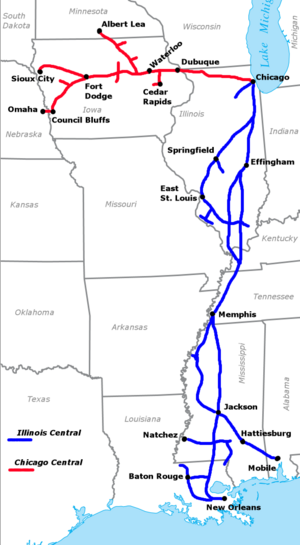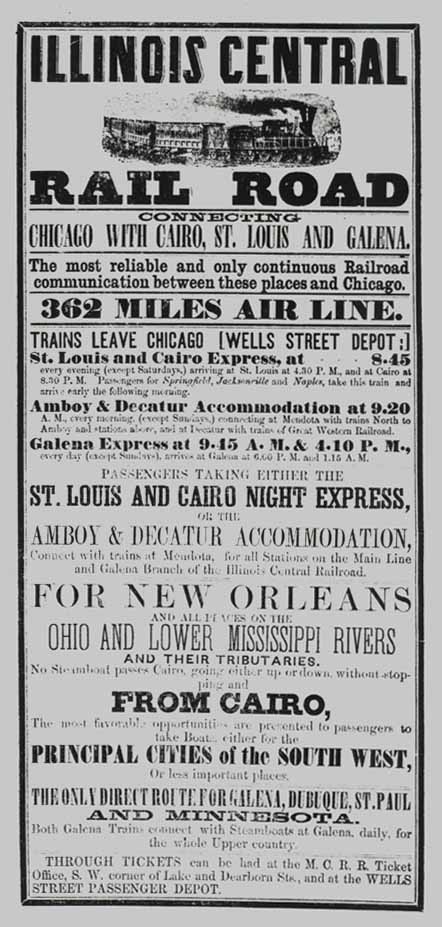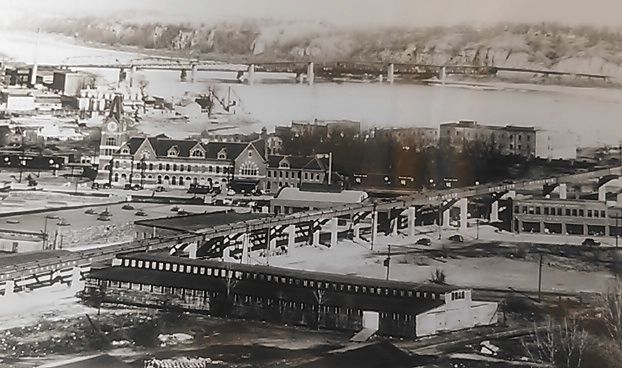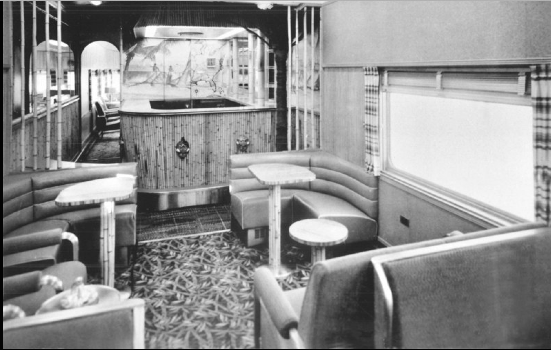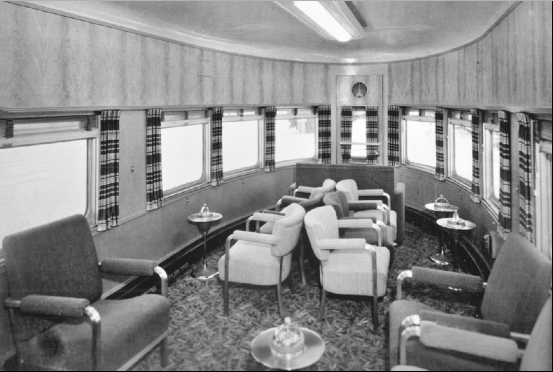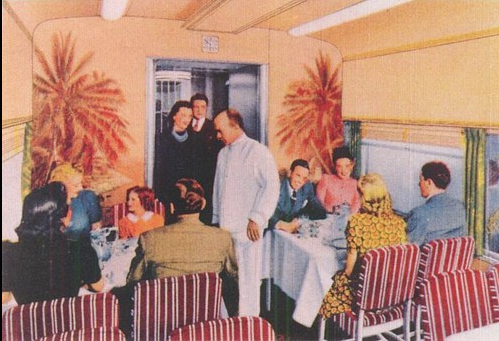Encyclopedia Dubuque
"Encyclopedia Dubuque is the online authority for all things Dubuque, written by the people who know the city best.”
Marshall Cohen—researcher and producer, CNN
Affiliated with the Local History Network of the State Historical Society of Iowa, and the Iowa Museum Association.
ILLINOIS CENTRAL RAILROAD: Difference between revisions
No edit summary |
No edit summary |
||
| Line 36: | Line 36: | ||
The same year the line was completed to Sioux City the Cedar Falls and Minnesota Railroad was opened to the Minnesota border. At the end of 1870, the Illinois Central was operating 405 miles of railroad in northern Iowa. (20) | The same year the line was completed to Sioux City the Cedar Falls and Minnesota Railroad was opened to the Minnesota border. At the end of 1870, the Illinois Central was operating 405 miles of railroad in northern Iowa. (20) | ||
As soon as its lease of the Iowa lines went into effect, the Illinois Central realized a significant growth in total operating revenues. Between 1868, the first full year of the lease, and 1880, the Iowa-leased lines contributed between one-seventh and one-fifth of the total annual operating revenues of the Illinois Central system. (21) | |||
[[Image:illinoiscentral.jpg|left|thumb|250px|Constructed at Jones and Iowa [[STREETS]], the building was still standing in 1975 without its porches, tower, and upper story dormitory. It had been remodeled into a freight station after [[WORLD WAR II]] when passenger service declined. ( | The Illinois Central Railroad (IC), sometimes called the "Main Line of Mid-America," had primary routes connecting Chicago, Illinois with New Orleans, Louisiana and Birmingham, Alabama. A line also connected Chicago with Sioux City, Iowa (1870). There was a significant branch to Omaha, Nebraska (1899) west of Fort Dodge, Iowa and another branch reaching Sioux Falls, South Dakota (1877) starting from Cherokee, Iowa. (22) The Illinois Central has claimed many "firsts." In 1866 the first shipment of fruit under refrigeration upon any railroad in the United States was carried by the Illinois Central from Cobden, Illinois to Chicago. In 1867 the railroad began operating the "Thunderbolt Express," the first all-strawberry train ever operated in the nation between southern Illinois and Chicago. (23) | ||
[[Image:illinoiscentral.jpg|left|thumb|250px|Constructed at Jones and Iowa [[STREETS]], the building was still standing in 1975 without its porches, tower, and upper story dormitory. It had been remodeled into a freight station after [[WORLD WAR II]] when passenger service declined. (24) Library of Congress]] | |||
[[File:illc.jpg|300px|thumb|right|Depot location.]] | [[File:illc.jpg|300px|thumb|right|Depot location.]] | ||
[[Image:freightwarehouse.jpg|left|thumb|250px|Illinois Central freight warehouse at First and Iowa.]] | [[Image:freightwarehouse.jpg|left|thumb|250px|Illinois Central freight warehouse at First and Iowa.]] | ||
Throughout the 1870s, and 1880s the IC acquired an estimated one hundred smaller railroads. ( | Throughout the 1870s, and 1880s the IC acquired an estimated one hundred smaller railroads. (25) Railroads were extended throughout the southern United States. IC lines crisscrossed the state of Mississippi and went as far as New Orleans, Louisiana to the south and Louisville, Kentucky in the east. In the 1880s, northern lines were built to Dodgeville, Wisconsin, Sioux Falls, South Dakota, and Omaha, Nebraska. Further expansion continued into the early twentieth century. In the 1950s and 1960s the Illinois Central provided passenger service through Dubuque aboard the "Land O' Corn" between Chicago and Waterloo and west to Sioux City aboard the "Hawkeye." (26) | ||
[[Image:icyardmastertower.jpg|left|thumb|250px|This photo is of the crossing guard tower that was in front of the CB&Q depot. A man in this tower controlled the flashing lights on the crossing signs at 3rd and 4th Streets, and possibly 1st and 2nd Streets, before the Highway 61/52/151 reconstruction. The tower was manned 24/7/365. Information courtesy: Mark G. Gayman, former ICRR telegraph operator]]The Canadian National Railway gained control of the IC in 1998. ( | [[Image:icyardmastertower.jpg|left|thumb|250px|This photo is of the crossing guard tower that was in front of the CB&Q depot. A man in this tower controlled the flashing lights on the crossing signs at 3rd and 4th Streets, and possibly 1st and 2nd Streets, before the Highway 61/52/151 reconstruction. The tower was manned 24/7/365. Information courtesy: Mark G. Gayman, former ICRR telegraph operator]]The Canadian National Railway gained control of the IC in 1998. (27) | ||
--- | --- | ||
| Line 91: | Line 93: | ||
20.Ibid. | 20.Ibid. | ||
21. "Illinois Central," Wikipedia. Online: http://en.wikipedia.org/wiki/Illinois_Central_Railroad | 21. Stover, John F. '''History of the Illinois Central'''. New York: Macmillan Publishing Company, Inc. 1975, p. 136 | ||
22. "Illinois Central," Wikipedia. Online: http://en.wikipedia.org/wiki/Illinois_Central_Railroad | |||
23. Corliss, p. 42 | |||
24. Meyer, Jeffrey J. "Inter-century Railroad Stations," '''Julien's Journal''', February 2012, p. 50 | |||
25. "Illinois Central Railroad (IC)," Encyclopaedia Britannica, Online: http://www.britannica.com/EBchecked/topic/282973/Illinois-Central-Railroad-IC | |||
26. Meyer, Jeffrey J. "Clear the Track," ''Julien's Journal'', March 2010, p. 36 | |||
27. "Illinois Central." | |||
[[Image:bamboo.png|left|thumb|250px|Photo courtesy: Illinois Central Railroad Heritage Association. City of Miami "Bamboo Grove"]] | [[Image:bamboo.png|left|thumb|250px|Photo courtesy: Illinois Central Railroad Heritage Association. City of Miami "Bamboo Grove"]] | ||
Revision as of 02:52, 30 October 2014
In 1850, before the Illinois Central System's first
line was built in Iowa, only one of every 131 acres
of land in the counties later traversed by the rail-
road was under cultivation. Today one out of every
one and one-half acres is under cultivation. Where
there were fewer than 88,000 acres in crop land in
these counties in 1850, there are now more than
7,700,000 acres classified as crop land. (1)
In 1927, the Illinois Central Railroad was stretched over twenty-nine Iowa counties and included some of the oldest railway lines in the state. (2) The history of railroads in Iowa began with the passage on September 20, 1850 of the Illinois Central Land Grant Act by the United States Congress. (3) Federal land grants of nearly 2,600,000 acres provided the economic incentive; the initial investment of $27 million came largely from British and Dutch interests. (4) This act laid the way for the passage of the Iowa Land Grant Act and the construction of the Illinois Central between Dubuque and Sioux City.
In 1850 the twenty-nine counties that would be crossed by the Illinois Central had less than 5,000 families with more than 3,000 of these living in Dubuque and Linn counties. (4) Iowa senators George Wallace JONES and Augustus C. Dodge had added to the Illinois Central bill that the proposed railroad should have a branch line extending from its northern terminus at La Salle to Dubuque in the state of Iowa. (5) President Millard Fillmore on September 20, 1850 signed the law making the Illinois Central the first land-grant railroad in the United States and more than twice the length of the longest railroad then existing in America.(6)
The Illinois Central was officially chartered by the Illinois General Assembly on February 10, 1851. Upon its completion, the Illinois Central was the longest railroad in the world. (7) The IC completed its “Charter Lines” (705 miles in Illinois) in September 1856. The “Chicago Branch” (from Centralia to Chicago) opened a year earlier, giving that city its most important link to the South. The trunk of the railroad extended from the MISSISSIPPI RIVER at Cairo northwest to the Mississippi opposite Dubuque, Iowa. (8)
Settlers streamed to Dubuque where Lucius Hart LANGWORTY, Jesse P. FARLEY began making plans for a railroad westward from Dubuque. Such an idea had been in the community for several years through the effort of John PLUMBE, Jr. On April 28, 1853 a meeting was held for the purpose of organizing the DUBUQUE AND PACIFIC RAILROAD. (9)
In July 1855 the construction of the Illinois Central had reach Dunleith (now East Dubuque). In a grand celebration held on July 18, 1855 visitors from New York, Buffalo, Cleveland and Chicago listed with local residents to speeches from Stephen A. Douglas and George W. Jones. The number of arrivals to Dubuque hotels in 1855 reached 85,045. (10) The Dubuque Land Office sold 1,610,363 acres of land. (11)
The financial difficulties of the Dubuque and Pacific Railroad led to it being forced into receivership by Morris K. Jesup. On August 13, 1860, the company was reorganized as the DUBUQUE AND SIOUX CITY RAILROAD. The company's first annual report for the year 1860 showed ownership of four locomotives, six passenger cars, sixty-five box cars, and thirty-five flat cars. (12)
While the Dubuque and Sioux City inched its way towards Cedar Falls, work had been started on the CEDAR FALLS AND MINNESOTA RAILROAD incorporated on April 16, 1858. (13)
In 1867 the Union Pacific Railroad was under construction. The Chicago and North Western Railroad had crossed Iowa and was near to establishing a junction with the Union Pacific at Council Bluffs. Council Bluffs was also the goal of the Rock Island and Burlington railroads which were building across Iowa.
Setting itself up as a rival and gateway to the West was Sioux City. With anticipation of appearance of the Dubuque and Sioux City Railroad, the Sioux City and Pacific Railroad had been organized. This was to connect with the the Union Pacific at Freemont, Nebraska. The pressure was put on the Dubuque line to hurry. (14)
The track between Iowa Falls and Sioux City became the project of John I. Blair. A millionaire iron manufacturer, miller, and railroad promoter, he was involved in the construction of the Sioux City and Pacific as well as the Cedar Falls and Minnesota project. (14) Every road he built was for cash. His railroad ventures led to his investment of $26 million, advanced from his personal fortune and raised from his friends. Not one dollar was raised by putting stock on the market. (16) In an agreement with the Illinois Central, Blair organized the Iowa Falls and Sioux City Railroad on October 1, 1867. (17)
Town sites were an important part of Blair's strategy. Through Blair's town site company, sites that became Manson, Fonda, Storm Lake, Marcus, and Remsen were offered for sale as rapidly as the track to them could be laid. The Iowa Falls and Sioux City Railroad led to the founding of an estimated twenty communities--all named by Blair except for Le Mars. As the rails reached that spot, Blair hosted a group of prominent citizens and their wives in a special train. He suggested that such a distinctive and beautiful place should have an appropriate name and suggested his guests do the naming. It was decided to use the first letter of each woman's name. (18)
Construction under Blair began at both end of the route. The line was completed between Iowa Falls and Fort Dodge and Sioux City and Cherokee by the summer of 1869. Regular train service between Chicago and Fort Dodge was established on July 8, 1870 after the completion of the DUNLEITH AND DUBUQUE BRIDGE. The "golden spike" in the construction of the Illinois Central's main line across Iowa was driven at a point three miles west of Storm Lake. (15) Regular service between Sioux City and Chicago was started on October 10, 1870. (19)
The same year the line was completed to Sioux City the Cedar Falls and Minnesota Railroad was opened to the Minnesota border. At the end of 1870, the Illinois Central was operating 405 miles of railroad in northern Iowa. (20)
As soon as its lease of the Iowa lines went into effect, the Illinois Central realized a significant growth in total operating revenues. Between 1868, the first full year of the lease, and 1880, the Iowa-leased lines contributed between one-seventh and one-fifth of the total annual operating revenues of the Illinois Central system. (21)
The Illinois Central Railroad (IC), sometimes called the "Main Line of Mid-America," had primary routes connecting Chicago, Illinois with New Orleans, Louisiana and Birmingham, Alabama. A line also connected Chicago with Sioux City, Iowa (1870). There was a significant branch to Omaha, Nebraska (1899) west of Fort Dodge, Iowa and another branch reaching Sioux Falls, South Dakota (1877) starting from Cherokee, Iowa. (22) The Illinois Central has claimed many "firsts." In 1866 the first shipment of fruit under refrigeration upon any railroad in the United States was carried by the Illinois Central from Cobden, Illinois to Chicago. In 1867 the railroad began operating the "Thunderbolt Express," the first all-strawberry train ever operated in the nation between southern Illinois and Chicago. (23)
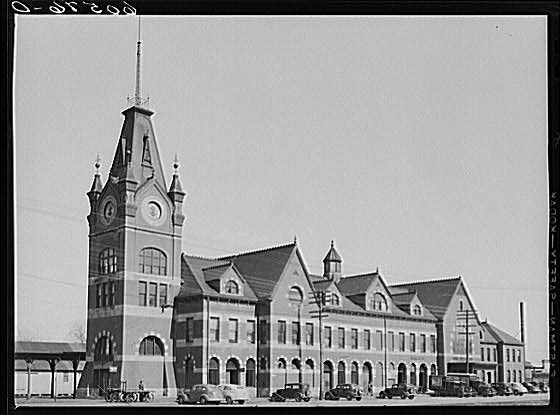
Throughout the 1870s, and 1880s the IC acquired an estimated one hundred smaller railroads. (25) Railroads were extended throughout the southern United States. IC lines crisscrossed the state of Mississippi and went as far as New Orleans, Louisiana to the south and Louisville, Kentucky in the east. In the 1880s, northern lines were built to Dodgeville, Wisconsin, Sioux Falls, South Dakota, and Omaha, Nebraska. Further expansion continued into the early twentieth century. In the 1950s and 1960s the Illinois Central provided passenger service through Dubuque aboard the "Land O' Corn" between Chicago and Waterloo and west to Sioux City aboard the "Hawkeye." (26)
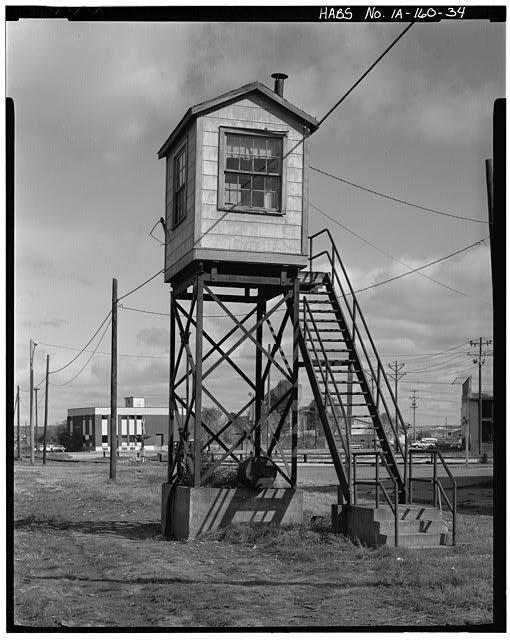
The Canadian National Railway gained control of the IC in 1998. (27)
---
Source:
1. "Iowa and the Illinois Central," Illinois Central Magazine, Nov. 27, 1927, p. 13
2. Ibid., p. 3
3. Ibid.
4. "Illinois Central Railroad," Encyclopedia of Chicago. Online: http://www.encyclopedia.chicagohistory.org/pages/627.html
4. "Iowa and the Illinois Central," p. 4
5. Ibid.
6. Corliss, Carlton J. Trails to Rails: A Story of Transportation Progress in Illinois, Chicago: Illinois Central System, 1934, p. 24
7. Ibid.
8. "Illinois Central Railroad."
9. "Iowa and the Illinois Central," p. 6
10. Ibid., p. 8
11. Ibid.
12. Ibid., p. 9
13.Ibid., p. 10
14.Ibid.
15. Hudson, David; Bergman, Marvin and Horton, Loren. The Biographical Dictionary of Iowa. Iowa City: University of Iowa Press, 2008, p. 44
16."Iowa and the Illinois Central," p. 11
17.Ibid.
18.Ibid, p. 12
19.Ibid.
20.Ibid.
21. Stover, John F. History of the Illinois Central. New York: Macmillan Publishing Company, Inc. 1975, p. 136
22. "Illinois Central," Wikipedia. Online: http://en.wikipedia.org/wiki/Illinois_Central_Railroad
23. Corliss, p. 42
24. Meyer, Jeffrey J. "Inter-century Railroad Stations," Julien's Journal, February 2012, p. 50
25. "Illinois Central Railroad (IC)," Encyclopaedia Britannica, Online: http://www.britannica.com/EBchecked/topic/282973/Illinois-Central-Railroad-IC
26. Meyer, Jeffrey J. "Clear the Track," Julien's Journal, March 2010, p. 36
27. "Illinois Central."


